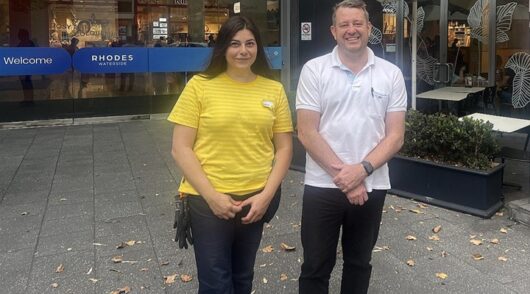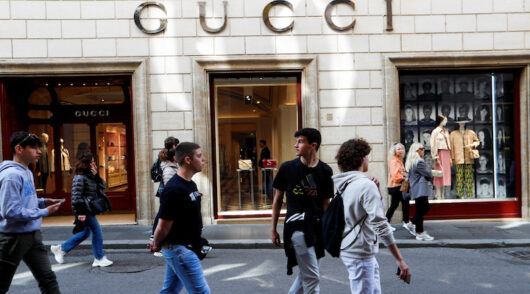Last year brought some challenges for the Australian fashion industry. A series of shifts and challenges have placed the sector under strain.
High-profile brands like Dion Lee and Mosaic Brands closed their doors, and IMG’s departure from Australian Fashion Week disrupted the sector. Rising operational costs, increased global competition, and shifting consumer behaviours are among the contributing factors.
Micro-trends: A new frontier in fashion
A key factor influencing Australian fashion is the rise of “micro-trends” – short-lived fashion movements amplified by platforms like TikTok and Instagram. This fast-moving cycle pressures brands to accelerate production and delivery. Ultra-fast fashion brands like Shein and Temu have leveraged advanced analytics and agile supply chains to dominate the market. Local Australian brands, burdened by higher production costs and slower logistics, find it increasingly difficult to compete at the same speed.
Fast fashion’s dominance and its impact
Fast fashion has transformed retail dynamics. Shein uses advanced data analytics to predict trends and manufacture new designs with speed, while Temu’s aggressive pricing strategies have captured cost-conscious consumers. This shift also presents an opportunity for Australian brands to differentiate themselves through quality and sustainability – areas where fast fashion often faces criticism.
The role of supply chain efficiency
Supply chain efficiency has become crucial in today’s market. Fast and reliable delivery is no longer optional; it is essential. Smart warehousing and automation technologies offer a path forward, enabling local brands to streamline operations, reduce delays, and improve fulfilment speed. These innovations allow Australian fashion brands to remain competitive, even in a global market increasingly dominated by fast fashion giants.
Ferag’s role in fashion retail innovation
To remain competitive, Australian fashion brands need scalable fulfilment strategies that support both in-store and e-commerce operations. Ferag offers smart solutions for both B2B and B2C that combine speed, accuracy, and lower labour costs
1. Getting product to shelf in stores more quickly
How it works:
- Ferag’s Skyfall sequencing and DoWarehouse’s smart waving and cubing modules pre-sort items in a sequence that allows products to be directly unloaded to a shelf or rack.
- Product is sequenced into a carton or tote, in order line sequence, allowing layering of product via automation. This allows for direct unpacking from the carton onto the shelf in order.
- Hangered garments can also be sequenced in order line sequence, allowing garment trolleys to be built in a smart SKU sequence for easy transfer to racks on the store floor.
Key benefits:
- Reduces lost sales through faster restocking.
- Improves space utilisation in-store.
- Streamlines back-of-house operations, reducing labour costs.
- Improves supply chain Service Level Agreement (SLA) metrics to stores.
2. E-commerce fulfilment excellence
- Managing peak demand with automation
- Predictive loading: Ferag’s DoWarehouse can use demand forecasts to pre-load products that are expected to have high demand – for example, new product launches or sales events.
- Skyfall pouch sorter: Stacks high-demand items for fast retrieval during peak periods, allowing orders to be automatically picked and then packed in one-step handling.
- Volume: Ferag’s smart solutions are designed to handle high volumes at speed.
Key benefits:
- Increases fulfilment speed while reducing temporary labour costs.
- Reduces the need for large automation costs to cover the highest peak periods by flattening the peak.
- Fast and accurate order fulfilment
- Skyfall Fast-Track Lane: Dedicated lane for priority orders, ensuring rapid processing.
- High inventory accuracy: DoWarehouse directs operators to the exact product location, displaying a visual product verification for accuracy.
- Automated Picking: DoWarehouse supports a range of automated picking solutions to ensure fast and labour-efficient picking.
Key benefits:
- Faster order processing leads to improved customer satisfaction.
- Higher SLA performance reduces delays and enhances brand trust.
- More repeat orders contribute to increased revenue.
3. Freight cost reduction and sustainability
- Reducing the number of cartons/satchels for the one consignment, as Skyfall and DoWarehouse can logically group order lines from the same or different storage areas, without the warehouse operator having to travel.
- Inventory accuracy minimises returns: Fewer incorrect shipments lead to fewer unnecessary returns and increased customer loyalty.
Key benefits:
- Reduces shipping costs with fewer packages and reduced returns.
- Enhances processing speed for high-demand periods.
- Supports sustainability by reducing freight and consumables.
Ferag’s range of smart solutions, including Skyfall and DoWarehouse unified control systems (UCs) are designed to help fashion brands in Australia optimise their fulfilment operations, improve efficiency, cut costs, and deliver a better customer experience.
The economic impact of fulfilment innovation
Investing in supply chain efficiency does not just meet consumer expectations – it also drives profitability. Ferag’s DoWarehouse UCS and Skyfall solutions reduce labour dependency, boost equipment efficiency, and lower return rates through more accurate fulfilment. This allows brands to optimise operations, reduce costs, and improve EBIT, creating a more financially resilient business model.
Conclusion: Opportunity comes from challenges
Could last year’s challenges for the Australian fashion industry offer an opportunity for reinvention? By embracing innovation, sustainability, and smarter supply chains, Australian fashion brands can not only survive but also thrive. Meeting the demands of the modern market will require significant investment in technology, but the potential rewards are an efficient, sustainable, and competitive industry. Make it a step worth taking.






